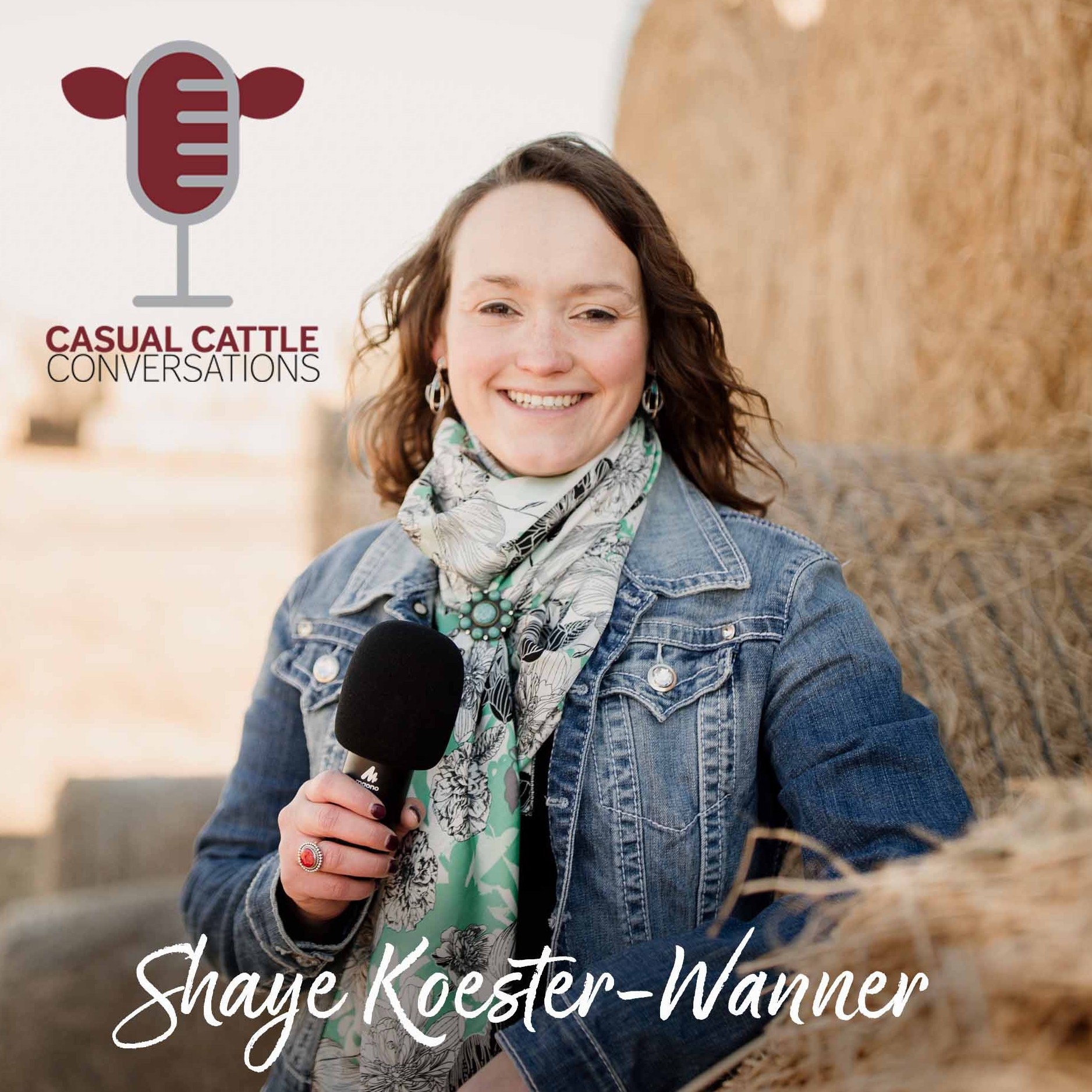

Casual Cattle Conversations
casualcattleconversations
Casual Cattle Conversations is the podcast for beef cattle producers and ranchers to explore new ideas and hear stories that will help them improve their current management practices. Shaye Koester - Wanner connects listeners to other cattle producers and beef industry experts to discover what management practices, industry trends, current events and inspiring stories are impacting today’s beef cattle industry.
Episodes
Mentioned books

Aug 8, 2022 • 15min
Tech Talk: Proper Power Fencing Installation
Stop making these common electric fencing mistakes and start getting the most bang for your buck out of your electric fencing systems.
Listen: https://www.casualcattleconversations.com/episodes
Watch: https://www.youtube.com/channel/UCAdZHIY1ZKSEcPH0DsqB-QA
Read: https://www.casualcattleconversations.com/readtheepisodes
Social Media:
Facebook - https://www.facebook.com/cattleconvos
Instagram - https://www.instagram.com/cattleconvos/
Resources: https://am.gallagher.com/en-US

Aug 1, 2022 • 39min
Eliminate the Cussing Match when Working Cattle with Family
I dare you to challenge how it has always been and start with yourself to make a difference on cattle working days and ranch work in general. Terryn Drieling shares how discovering who we are through the Enneagram aids in our ability to work with others and ourselves during everyday ranch work and life events in this episode.
Read: https://www.casualcattleconversations.com/readtheepisodes Listen: https://www.casualcattleconversations.com/episodes
Watch: https://youtu.be/scbcf0aEpzc
Terryn's Social Media: https://www.instagram.com/terryn.drieling/

Jul 25, 2022 • 19min
The Key to Collecting & Using Herd Data
Uncover what's in it for you when you start collecting herd data and learn the beginning steps of this process with Ray Williams. Ray shares his expertise about scales, load bars and EIDs in the beef industry and how these integrated systems are improving the profitability and efficiency of ranches around the globe. #gallagher
Resources: https://am.gallagher.com/
Watch: https://youtu.be/tQ6Wffzy7Yg
Listen: https://www.casualcattleconversations.com/episodes
Read: https://www.casualcattleconversations.com/readtheepisodes
RancherMind: https://www.casualcattleconversations.com/ranchermind-events

Jul 18, 2022 • 17min
Start Doing it All in One Day
Whether you are ranching full-time are taking on other gigs too, there is always more than one thing going on. Start making the most of your drive time by using the 4 tips outlined in this episode by your host, Shaye Koester.
YouTube: https://www.youtube.com/channel/UCAdZHIY1ZKSEcPH0DsqB-QA
Transcripts: https://www.casualcattleconversations.com/readtheepisodes
Facebook: https://www.facebook.com/cattleconvos
Instagram: https://www.instagram.com/cattleconvos/

Jul 11, 2022 • 9min
Tech Talk: Digital Support & Troubleshooting
James Clark shares ways ranchers can access reliable technology support to keep their operations moving forward in a timely manner. This quick episode will tell you where to go and who to talk to when you need it!
Read: https://www.casualcattleconversations.com/readtheepisodes
Watch: https://www.youtube.com/channel/UCAdZHIY1ZKSEcPH0DsqB-QA
Listen: https://www.casualcattleconversations.com/episodeshttps://www.casualcattleconversations.com/episodes

Jul 5, 2022 • 27min
Unlocking the Future of Conception, Calving and Cow Management
Chad and Amy Wilkerson are industry leaders when it comes to changing the way we think about calving seasons. Wilkerson Farms utilizes hoop barn systems to their advantage to run a 1400-head recipient herd that allows them to calve year-round.
Watch: https://www.youtube.com/channel/UCAdZHIY1ZKSEcPH0DsqB-QA
Read: https://www.casualcattleconversations.com/readtheepisodes
RancherMind Events: https://www.casualcattleconversations.com/ranchermind-events

Jun 27, 2022 • 18min
How to Adapt Your Grazing System to Your Environment
Wes Chism joins the show to share his experience and knowledge from helping ranchers in the southern United States manage their grazing systems to fit their environments.
Wes covers topics around managing fescue, native grasses, stockpiling, fencing systems, watering systems and how to navigate rotational grazing as a seedstock producer.
This quick 18-minute episode is well worth the listen!
Resources:
https://am.gallagher.com/
Geared Reel
Listen: https://www.casualcattleconversations.com/
Read: https://www.casualcattleconversations.com/readtheepisodes
RancherMind: https://www.casualcattleconversations.com/ranchermind-events
Watch: https://www.youtube.com/channel/UCAdZHIY1ZKSEcPH0DsqB-QA/featured

Jun 20, 2022 • 29min
Choosing the U.S. Beef Industry in an Agricultural World
2 Reasons Why the U.S. Beef Industry is King 👑
•
1. Cattle Efficiency & Management Practices
2. The Research and Science being Conducted
•
Sebastian Mejia Turcios is from Honduras but after immersing himself in several global agriculture opportunities, has picked the U.S. to continue his education and career.
•
Learn more about the difference in beef industries between Honduras & America by listening to this episode!
Listen: https://www.casualcattleconversations.com/ Read: https://www.casualcattleconversations.com/ Watch: https://youtu.be/xf9DVWNsZLU RancherMinds: https://www.casualcattleconversations.com/
#heyheyitsshaye #ranching #podcast #agpodcast

Jun 13, 2022 • 15min
Tech Talk: The Key to Proper Grounding
Buddy Rowlett shares mistakes to avoid when establishing your grounding system and how to navigate electric fencing depending on your climate in this short Tech Talk!

Jun 6, 2022 • 17min
Creating Abundance in an Arid Climate
Marcos Jeffers has truly embraced holistic ranch management practices and is reaping the benefits of moving his cattle multiple times per day as a part of his grazing strategy. The Jeffers ranch is truly creating abundance in the arid climate of Chihuahua, Mexico. James shares the ranch's grazing strategy, how they got started and where other producers can start in this episode.
Listen: https://www.casualcattleconversations.com/episodes
Watch: https://youtu.be/mS5RTgPiR4k
Read: https://www.casualcattleconversations.com/readtheepisodes


